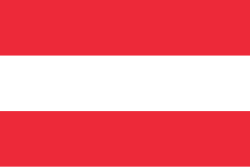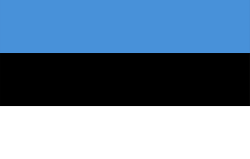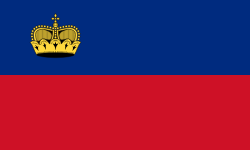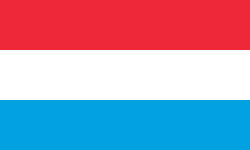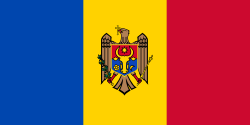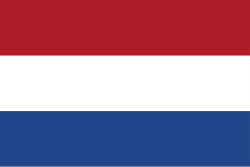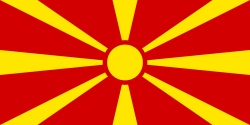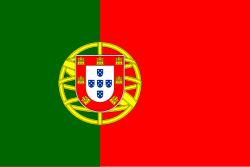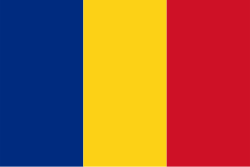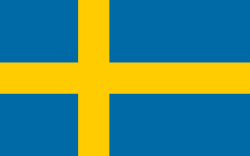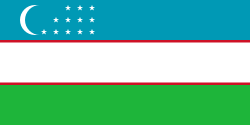General Information
Population
Immigration
Emigration
Working-age population
Unemployment rate
GDP
Migration Authorities
Responsible Body
Line Ministries
Agencies
Description
The Netherlands, the fifth-largest economy in the EU, saw its economy grow by 21.2% between 2014 and 2024. Its population grew by 6.7% over the same period, reaching 18,044,027 in 2024. This growth was primarily driven by immigration, as the country experienced negative natural population growth. Net migration has been positive since 2008, rising steadily each year and reaching 107,768 in 2024, whereas natural population growth has been negative since 2022, standing at -6,022 in 2024. Around 3.4 million people residing in the Netherlands originate from outside Europe with persons born in Türkiye, Morocco and Suriname representing the three largest groups (468,726, 433,337, and 367,771 respectively).
According to the UN DESA, 631,391 Dutch citizens were residing abroad in 2024, mostly in Belgium, Spain, Sweden, Italy, as well as in Australia, New Zealand and Türkiye. The emigration of Dutch citizens to OECD countries increased by 5% in 2022, reaching 43,000, with Spain (20%), Belgium (19%) and Germany (13%) being the top destinations. In 2024, 208,537 individuals emigrated from the Netherlands – 56,000 more than in 2020. Of these, Dutch citizens accounted for 22%. More than half of non-Dutch migrants leave the Netherlands within five years of arrival, though this share has steadily declined since 2012. Asylum seekers now stay longer than before, while labour and study migrants remain more likely to depart, particularly those from EU/EFTA countries (around 60% leave). By contrast, migrants from outside the EU show lower departure rates (40-50%), with highly skilled migrants increasingly staying longer.
In 2024, 316,000 immigrants arrived in the Netherlands, 19,000 fewer than in 2023. Immigration from both EU Member States and non-EU countries was lower than in 2023, while the number of returning Dutch immigrants remained unchanged. Almost half of migrants came from countries outside the EU. The largest number of immigrants originated from Ukraine (29,365), followed by Syria (24,818), Poland (21,808), Türkiye (14,202), and Romania (12,382).
Over the past 25 years, nearly one in five migrants came to the Netherlands as labour migrants. In 2023, there were nearly 70,000 labour migrants, nearly 65% of whom were from an EU country. In 2024, the number fell to 21,500[IL1] [DS2] , reflecting a notable decline in the ‘knowledge migrants’ category – a specific permit category for non-EU/EEA highly-skilled workers. The number of EU labour migrants also fell, but less sharply. As fewer knowledge migrants arrived in the prior years, fewer family members joined them in 2023-24. In 2023 family migration stood at almost 73,000 persons, whereas in 2024 it reached only 39,600. Asylum seekers made up around 12% of all immigrants in 2024, above the long-term average of about 9% over the past 25 years.
In 2024, the Netherlands issued 128,375 residence permits, with the highest number issued for family reasons (42,210), followed by labour and employment (23,415) and study purposes (21,875). Nationals of China (3,335), the US (2,245), India (1,865), and Türkiye (1,790) received the largest number of study-related permits . For employment-related permits, top recipients were nationals of India (4,105), China (3,145), the US (1,975), Türkiye (1,730), and the UK (1,420). Meanwhile, nationals of India (4,920), Syria (3,795), Türkiye (3,350), and Morocco (2,225) were the top recipients of family-related permits.
Out of the 31,120 asylum-related residence permits issued in 2024, two-thirds were granted on the basis of refugee or beneficiary status and the remainder on humanitarian grounds. Syrians received most asylum-related permits, followed by Turkish (1,590), Yemeni (1,540), and Eritrean nationals (1,455). During the same year, over 32,000 people submitted a first-time asylum application, 16% fewer than in 2023. In contrast, the number of family members of asylum seekers with residence permits in the Netherlands increased to 11,900, 17% more than in 2023. As in previous years, Syrians accounted for the largest shared of applications with 11,500 in 2024. They were followed by Iraqis (2,200), followed by Turks (1,900) and Eritreans (1,500). Following a six-month suspension of Syrian asylum applications amid uncertainty caused by the fall of the Assad regime, the Dutch government resumed processing these cases on 14 June 2025.
In March 2022, the Netherlands granted temporary protection to nationals fleeing the war in Ukraine. In August 2025, 129,350 beneficiaries of temporary protection were residing in the Netherlands. Statistics Netherlands shows that 30,000 Ukrainian nationals arrived in the Netherlands in 2024. As of November 2024, nearly six out of ten Ukrainian refugees were in paid employment.
Irregular migration remains a priority topic for the Netherlands. In 2024, Dutch authorities refused entry to 2,375 non-EU nationals at the external borders, whereas 3,995 non-EU nationals were detected as being illegally present in the country, marking a significant decrease from 6,530 in 2023. During the same year, 19,075 non-EU nationals were issued return orders, a slight increase from 6,890 the year before.
The Dutch government has introduced several measures to protect migrant workers from exploitation. A draft law regulating the mandatory certification of employment agencies under the Labour Posting Admission Act is set to enter into force in 2026. The Good Landlordship Act, effective 1 July 2023, aims targets discrimination and exploitative rental practices, including specific protection for labour migrants such as the separation of labour and rental contracts. In response to the rapid growth of international student numbers – tripling from 2005 to 2022, to 115 000, or 40% of all university enrolments – the government prepared legislation in 2023 to better manage student inflows. In 2025, the government introduced the new Action agenda for integration and an open and free society, outlining its commitment to fostering an inclusive society in which newcomers can thrive and contribute. The agenda focuses on social participation, language proficiency, and employment opportunities, and includes the introduction of ‘start jobs’ for refugees, promotion of gender equality, and efforts to address harmful practices in closed communities.
On 17 April 2024, the Netherlands terminated its residency-by-investment programme, which had offered renewable three-year residency visa with work rights to applicants investing at least EUR 1.25 million. Authorities cited low uptake and limited economic benefits as reasons for discontinuation.
In 2024, the Netherlands finalised a new National Action Plan to combat human trafficking and increased funding for its implementation. The Labour Inspectorate created a 30-person division dedicated solely to investigating labour exploitation, including trafficking. The government introduced measures to prevent criminal exploitation of children, including by conducting research on combating criminal exploitation in schools and creating a national helpline and online outreach portal for victims of criminal exploitation and vulnerable youth. In June 2025, the Dutch House of Representatives approved the "Modernisation and Expansion of the Criminalisation of Human Trafficking" bill. This bill amends Article 273f of the Dutch Criminal Code to implement the revised EU Anti-Trafficking Directive, providing a stronger legal basis to combat human trafficking and severe labour exploitation. The law still awaits Senate approval.
In 2024, the Netherlands established the Ministry of Asylum and Migration, transferring responsibilities from the Ministry of Justice and Security to streamline asylum management and implement stricter migration policies under the new government. Subsequently, in July 2025, the Dutch parliament’s lower house passed legislation tightening asylum policies, including reducing temporary asylum residency from five to three years, indefinitely suspending new asylum residency permits, and restricting family reunification for asylum beneficiaries. The Netherlands plans to adopt the ‘Dual Status System Act’ establishing a legal distinction between refugees fleeing persecution and those displaced by conflict or disasters, alongside the ‘Asylum Emergency Measures Act’, which criminalises undocumented status and assistance to undocumented individuals – marking a significant policy shift towards stricter migration control.
In 2023, the Netherlands became the 20th Member State of the International Centre for Migration Policy Development. The country is party to several migration dialogues, including the Prague Process.
Relevant Publications


